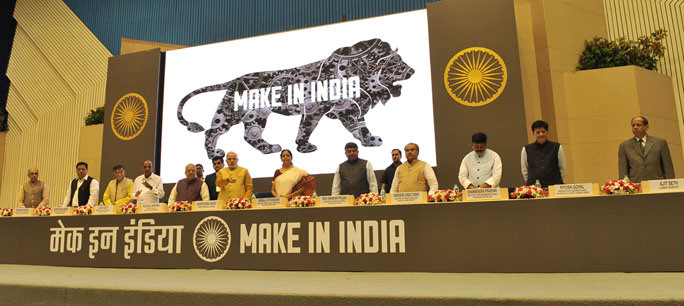The following article is an adapted translation of this article, written by Wang Xinxi and published by Sina Tech.
The signs of a shift are everywhere. China, the world’s mobile phone manufacturing hub, is swiftly losing ground to India.
Consider: Not long ago, Samsung built a new mobile phone manufacturing plant in Noida, India. It’s Samsung’s second factory in the country, and is slated to become the world’s largest such plant, producing a whopping 120 million mobile phones per year.
Prior to that, Samsung had invested quite a bit in the Chinese manufacturing market. But as domestic economic growth slows, Samsung’s strategic vision has pivoted toward India.
Apple, Foxconn, and a host of other domestic mobile phone manufacturers have also invested in India-based manufacturing over the past couple of years. For example, last year, Apple began manufacturing some iPhones in India, and approached the Indian government about tax breaks to facilitate its suppliers manufacturing phones there.
And the list goes on. Acer’s spin-off manufacturing arm Wistron and Foxconn have both announced agreements with Indian government officials to rent land for local manufacturing purposes.
It’s not just the global players that are moving away. Virtually all of China’s phone manufacturers have established manufacturing in India. Vivo, Oppo, Xiaomi, and more all have factories there. Xiaomi, in fact, already has two, and earlier this year announced plans to open a third.

Vivo’s new 30,000 square meter manufacturing plant in India is its largest outside of China.
Even component makers like chipmaker Mediatek have announced plans to slow manufacturing programs in China as they shift toward India and other Southeast Asian locales.
One of the reasons for this is simple saturation; manufacturing growth and smartphone sales in China are slowing, while the comparatively unsaturated Indian market is heating up. With smartphone penetration in India is still only 30 percent, some phone manufacturers see the soon-to-be massive market as crucial to their future success and want to set up there before their competitors do.
Another reason: India’s government has incentivized local production through a variety of policies, including raising import duties on critical parts to make direct investment in India more financially compelling to manufacturers.
The biggest reason, of course, is money. Rent, equipment, and labor costs are all typically lower in India than China, meaning that manufacturers can produce phones more affordably there. And with costs in China being driven continuously upward by rising living standards even as local demand for smartphones slows, Chinese phone makers are finding themselves in a position where they need to make phones more cheaply even as all of their costs are rising.
The movement toward India, with its lower costs and far less saturated market, could thus prove very difficult to reverse.

Xiaomi’s manufacturing plants in Vizag, India.
China’s manufacturing industry worries
A mobile phone manufacturing shift away from China could cause serious problems. China’s manufacturing industry is an important part of the country’s economic power. And like India, China is a populous country. Without the stability provided by the manufacturing industry, China’s economy could experience a massive capital outflow.
India does have a comparative shortage of skilled laborers, but the movement of Chinese phone manufacturers to India will provide an opportunity for the country to both attract and train more skilled workers, speeding the development of the entire Indian mobile phone industry, including related sectors like R&D.
We have seen this effect before in China. When Foxconn established a massive presence in Zhengzhou, an entire vertical mobile phone supply chain took shape in the region. As mobile phone manufacturing becomes more established in India, the country will have a chance to become a more influential player in the global mobile phone industry as related businesses spring up around manufacturing hubs.
The current global climate, with America shouting about the return of domestic manufacturing and firms like Foxconn, Apple, and Samsung moving manufacturing to India, is a serious warning to the “made in China” industry.
Growing problems for China, with no obvious solutions

Narendra Modi launches Make in India campaign (Photo credit: Wikimedia Commons)
India’s Modi government has been touting the “make in India” plan since 2014, with the ultimate goal of making India the center of the global manufacturing industry. That strategy appears to be gradually coming to fruition.
India’s smartphone market is dominated by low-cost Android phones from domestic players like Lava, Intex, and Micromax, as well as Chinese firms like Xiaomi, Oppo, Lenovo, and Vivo. In the past, the Indian firms had trouble competing with Chinese companies on quality because they lacked access to a strong local supply chain, and many local factories like Micromax’s depended on Shenzhen subcontractors to meet their numbers. But as India’s domestic manufacturing industry grows, that’s becoming less true.
As far as the giants Apple and Samsung go, the Chinese consumer market remains crucially important. But their changes in supply chain strategy pose a definite risk to the Chinese manufacturing industry.
Finding a solution may be difficult. While America’s manufacturing industry dropped off naturally along with a corresponding boom in technology, research, and R&D, China’s manufacturing industry may not be as easily replaced, as the economic sectors needed to replace it are still developing.
And the mobile phone industry is but one signal of the broader trend that is Chinese manufacturing moving abroad. Electronics makers like Samsung, Toshiba, Panasonic, and Sony, are all considering cutting investments in Chinese manufacturing, setting their sights on countries like India. Even domestic manufacturers are moving more of their operations abroad in a bid to become more globally relevant and competitive.
At the same time, the “made in America” movement isn’t just a political slogan – data from the last few years shows that some manufacturing has indeed moved back to US shores.
The movement of low-cost manufacturing is probably an unstoppable trend. But at the same time, China’s technological development and local talent pool is not yet sufficient to support a large enough high-end manufacturing industry to replace all the departing low-cost players. So what’s good news for the development of manufacturing in Southeast Asian countries like India has all the makings of an impending concern, or perhaps even a crisis, for China.






